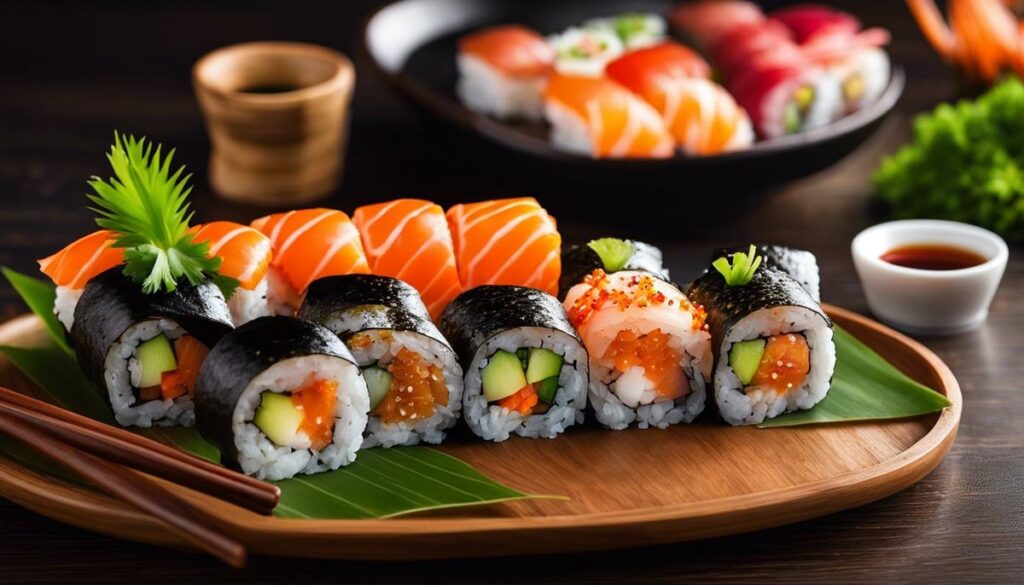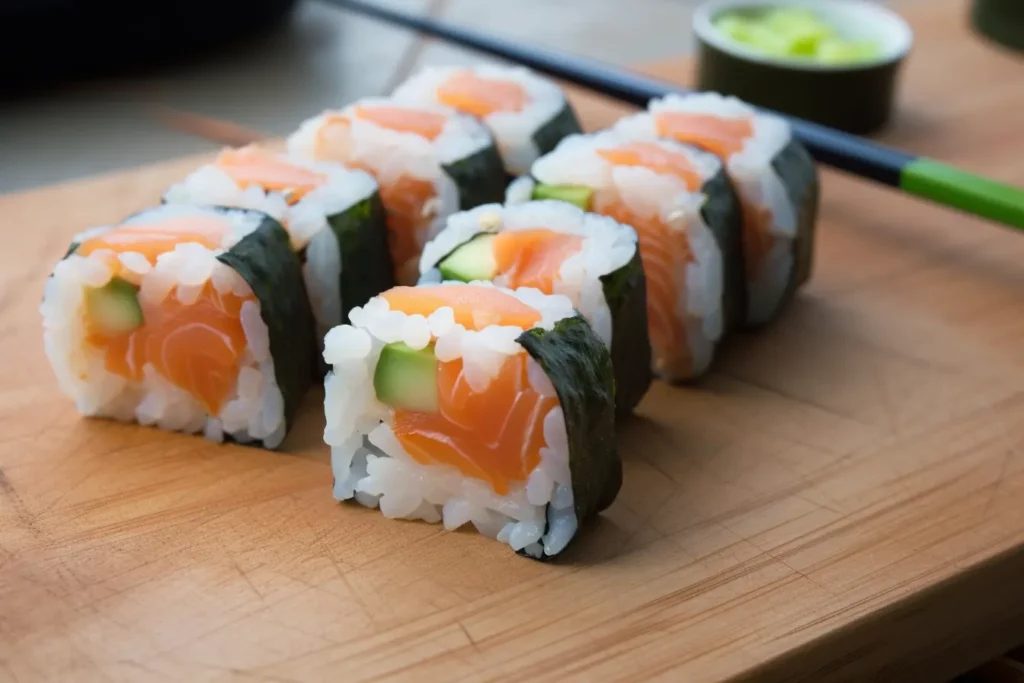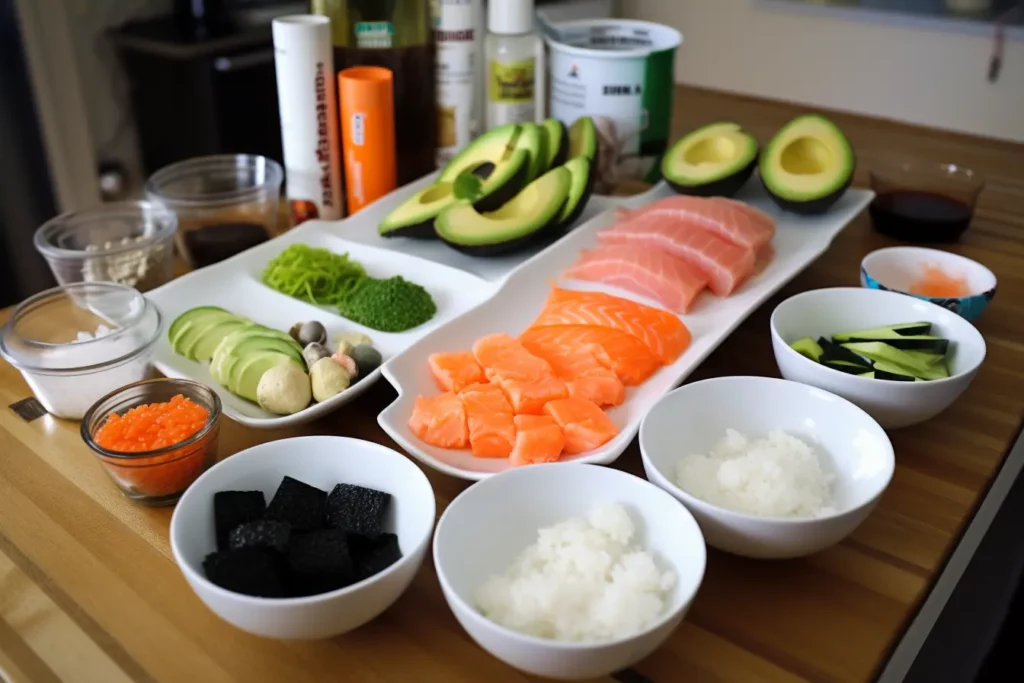Japanese sushi culture, once hidden and mysterious, has captured the hearts and palates of foodies worldwide. Our journey begins at the origins of sushi in Japan, where meticulous craftsmanship meets the freshest ingredients to create exquisite flavor. Sushi is much more than just a dish; it is the essence of harmony, precision and respect – values that are deeply rooted in Japanese culture. With globalization, sushi became a global phenomenon and has been constantly evolving ever since to meet the discerning tastes and needs of people around the world.
Authentic Sushi: The Japanese Standard
As the place where the traditional art of sushi making originated, Japan has a unique take on authenticity and quality. The island nation’s culture places the utmost emphasis on craftsmanship, aesthetics and attention to detail, which are expressed in every slice of fresh, delicious sushi.
Fresh ingredients play a crucial role in the preparation of sushi. Japan is fortunate to have access to a variety of seafood of the highest quality – something that significantly influences the authenticity of sushi. Because sushi is not just a dish, but a true sensory experience, where every component, from texture to presentation, is meticulously considered.
Culinary technique and mastery of skills are essential for authentic sushi. Sushi chefs in Japan spend years, if not decades, studying and perfecting their techniques. The master then combines these techniques to turn each roll and cut into a gastronomic work of art. Their respect for ingredients, their mastery of techniques and their constant search for perfection are a testament to Japan’s deep-rooted commitment to authenticity.
In addition, the Japanese celebrate food as a social act. Sushi is often enjoyed in groups, whether at social gatherings, celebrations, or simple get-togethers. The way sushi is served and enjoyed adds to the authenticity of the experience, adding a layer of community and conviviality.
Another factor that contributes to the authenticity of sushi is the simple but elegant presentation. Sushi is often served on minimalist platters that draw the eye to the colorful, fresh ingredients. The beauty of sushi often lies in its simplicity – a testament to the Japanese aesthetic that celebrates ‘less is more’.
All in all, it is irrefutable that Japan, as the birthplace of sushi, defines its authenticity through a combination of the use of fresh, high-quality ingredients, masterful technique and presentation. Thus, the sushi carpenter’s tradition – and the loving craftsmanship that surrounds it – remains at the heart and soul of this culinary art form.
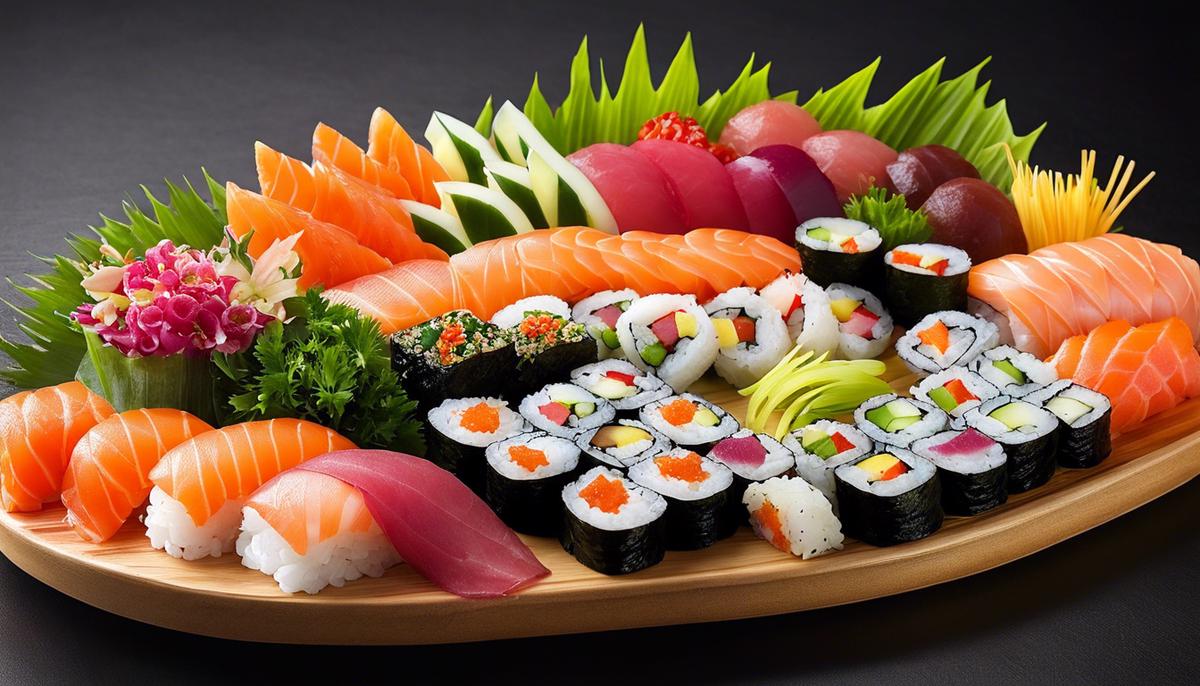
The Globalization of Sushi: Adaptations Worldwide
How Sushi Conquered the World: A Global Adaptation
The full experience of sushi cannot be reduced to the great combination of fresh ingredients, masterful technique and tongue-in-cheek presentation. However, considering that this fee-like food is growing in popularity outside of Japan, it is inevitable that adjustments will have to be made.
Sushi is no longer exclusive to Japan, but each country that interprets it in its own way influences the tradition in subtle but specific ways. The global version of sushi entails the modification of the recipes, which in turn is adapted to local tastes.
Europeans, for example, tend to top sushi with multiple ingredients, giving it a greater variety of flavors. In the U.S., on the other hand, sushi is often served with cooked ingredients, sauces, and spices, which would be rather unusual in Japan.
However, the level of customization varies from country to country, ranging from absolute adoption of Japanese cuisine to extravagant interpretations with the respective regional ingredients and cultures.
Another significant difference in the global adoption of sushi is the way it is consumed. In Japan, the prevailing view is that sushi is a meal that is enjoyed in peace and quiet in a sushi bar, while in Western countries it is often chosen as a quick meal “to go” or as a delivery option.
The packaging of sushi for consumption while traveling is another example of adapting to the new culture. Presentation is still important, but instead of minimalist aesthetics, Western cultures focus more on durability and comfort.
Regardless of all the changes, it remains a wonderful fact that sushi has found its way to the taste buds of people all over the world, and that the basic idea of sushi, to mold fresh ingredients into a culinary delight with skill and care, is still deeply rooted in every tuna nigiri or salmon sashimi. Sushi’s global presence symbolizes not only a culinary exchange, but also a cultural dialogue between Japan and the world.
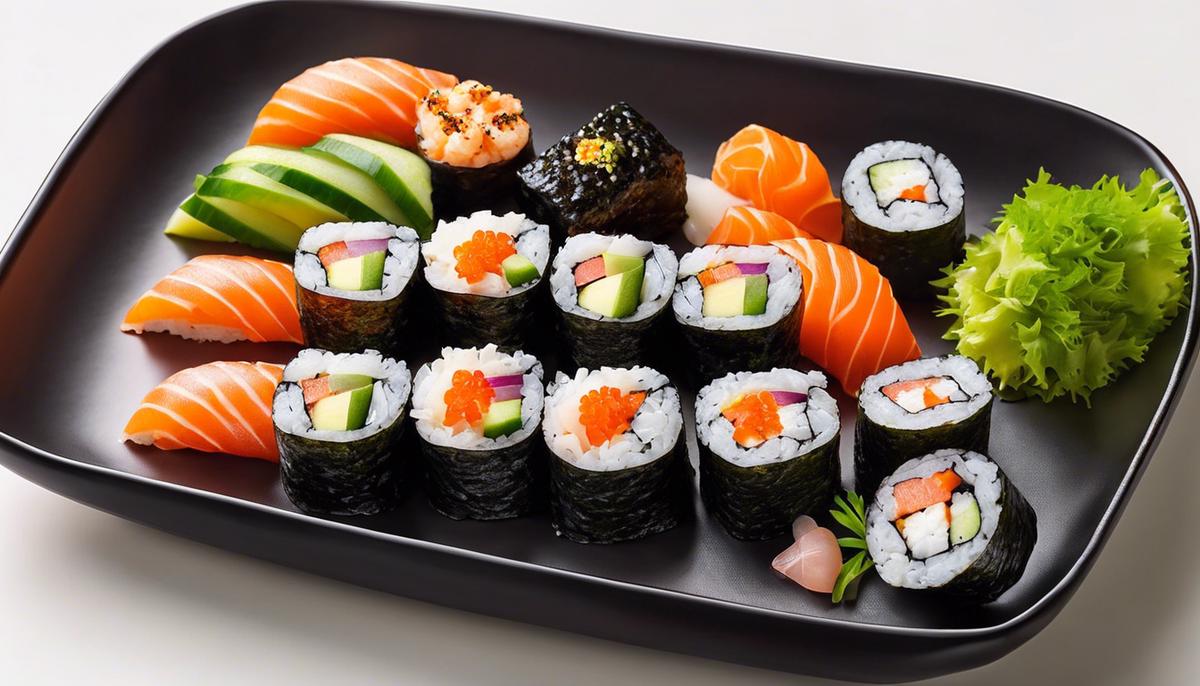
Gourmet Trends: Sushi in High-End Gastronomy
In the age of social media, where food photography and #foodporn are part of everyday vocabulary, sushi has achieved unprecedented popularity worldwide. The picture-perfect presentation of this Japanese dish has captured the aesthetics of foodies and influencers alike, leading to sushi being introduced into high-end gastronomy.
The global popularity of sushi has undoubtedly led to some adjustments. While the original sushi impresses with its simplicity, creativity plays a decisive role in Western interpretations. In American sushi restaurants, for example, you can find dishes that are completely unknown in Japan, such as the California Roll or the Philly Roll.
Sushi varieties vary from country to country, city to city, and sometimes even from restaurant to restaurant, not only in terms of the ingredients used, but also in terms of presentation. In Europe, we often find fusion cuisine sushi that combines local flavors with the traditional Japanese techniques.
It is noteworthy that although sushi is very different in Japan and in the West, consumer behavior remains the same. In both Japan and Western countries, sushi is often considered fast food to be enjoyed either as a takeaway or for a quick lunch.
The packaging of sushi has adapted to modern life and is also suitable for travel. Many sushi restaurants offer an eye-catching and handy box that not only makes sushi safe for transport, but also gives it its classy presentation.
Although sushi has adapted to local tastes and preferences, the essence of sushi remains. Its cultural influence goes far beyond simple food intake and is synonymous with aesthetics and respect for food.
The rapid increase in the popularity of sushi has allowed its inclusion in high-end gastronomy. This humble deli has transformed itself into a modern icon of global cuisine, and rightly so, considering the dedication, finesse, and awe it demands. In fact, sushi isn’t just a dish, it’s an art form!
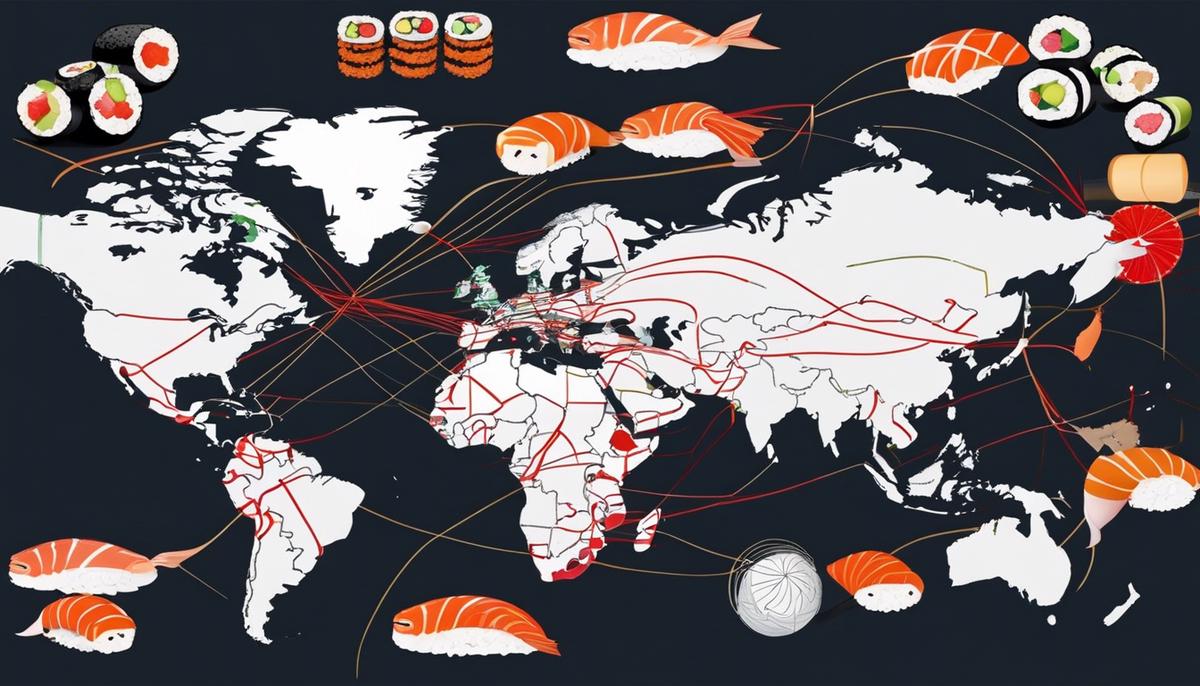
Health Aspects: Nutrients and Effects of Sushi
Sushi is far more than just another dish, it’s an artful display of taste, texture, and visual beauty that elevates it to the status of an experience rather than just a meal. But what actually makes it a healthy option and what are the potential health concerns?
A variety of healthy ingredients are used in sushi, making it an extremely nutritious meal. Fish, a key ingredient in many sushi varieties, is rich in omega-3 fatty acids, which are known to be good for the heart and contribute to overall well-being. At the same time, the rice used in the preparation of sushi is a valuable source of carbohydrates and has a low glycemic index, which ensures stable blood sugar levels. In addition, the vegetables often used in sushi, such as avocado, provide many important vitamins and minerals.
Despite the many health benefits of sushi, there are some concerns to be aware of. One of these concerns the consumption of raw fish, which can pose a potential risk of parasitic infections. Fortunately, such risks are minimal due to strict health and safety standards in most sushi restaurants.
Another concern is the high salt and sugar content in some sushi variants. Soy sauce, often served as a dip in sushi, is known to be high in sodium, while the rice in sushi is often seasoned with sugar. However, moderate consumption and vigilance when choosing the sushi variant can help minimize these risks.
All in all, sushi is a nutritious and visually appealing meal that, when enjoyed in moderation, can be part of a healthy diet. It is a celebration of the essence and aesthetics of Japanese cuisine, which can also be transferred to our lifestyle, focusing on quality, authenticity and conscious enjoyment.
Eating habits have a significant impact on our health and well-being, and it’s important to make informed choices. Sushi not only shares a culinary experience, but also provides a variety of nutrients that are beneficial to us. Nevertheless, it is crucial to be aware and eat a balanced diet in order to take care of not only our health, but also our very individual lifestyle.
By incorporating the art of sushi enjoyment into our lives, we can create a deeper connection with our diet while appreciating the authentic cuisine and culture of sushi.
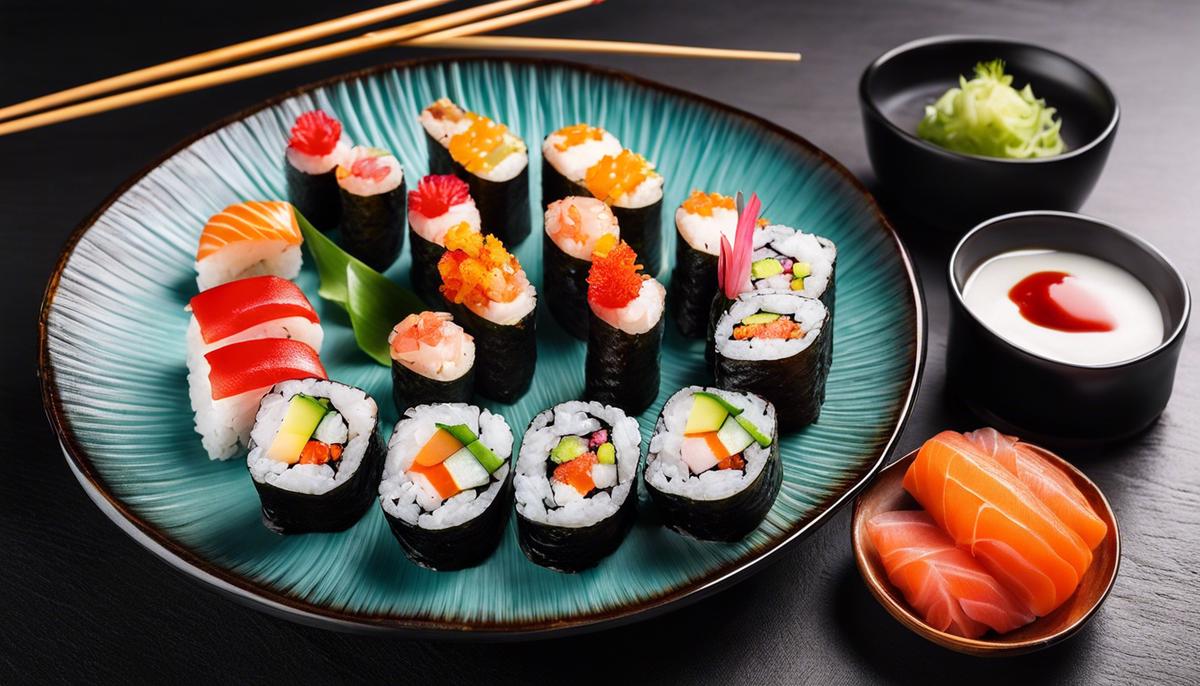
Cultural Symbiosis: The Influences of Sushi on Different Cultures
With great joy and passion, the influence of sushi on different cultures and this mutual influence receives sustained attention. A central feature of sushi’s global popularity is the finely tuned adaptations of the dish, which are expressed in a wide variety of places.
The multifaceted repertoire of sushi variants, for example, is strongly dependent on cultural background and regional preferences. Both European and American interpretations of sushi bear witness to diverse gastronomic influences that are redefining this globally beloved dish.
The different ways of consuming sushi also illustrate the cultural differences. While sushi in Japan is traditionally enjoyed in a specialized restaurant, sushi has established itself in many contexts in the West – from a quick snack on the go to a noble main course at a dinner.
The presentation of sushi is just as varied as the ways in which it is consumed. The attractive presentation ranges from authentic packaging for consumption on the road to masterful staging in Michelin-starred restaurants.
Despite these variations and adjustments, the essential essence of sushi remains unchanged: a declaration of quality, aesthetics and the artistry of making sushi. Much of this is once again reflected in the high popularity of sushi on social media. Its visual aesthetic and artful presentation make sushi a stylish trendsetter on platforms like Instagram and TikTok, where millions of fans get inspired every day.
But even away from the digital world, sushi reaches people in a variety of ways. If we look at high-end gastronomy, we can see how sushi is setting new standards as an art form. The filigree creations, which are created at star level, are far more than mere dishes – they are a tribute to culinary creativity and masterful craftsmanship.
Finally, sushi perfectly illuminates the aspects of healthy nutrition and conscious food intake. Its main ingredients are rich in omega-3 fatty acids and contain a low glycemic index number, which can make the dish a valuable nutritional basis for a balanced and healthy diet – provided you choose consciously and enjoy moderately.
To sum up, sushi is much more than just a dish. It’s a reflection of our eating habits, our appreciation for food, and our inclusion in global culture. By incorporating the art of sushi into our lives, we can connect with our diet and appreciate the authentic cuisine and culture that comes with it. It offers us the opportunity to make informed choices about our diet and in this way influence our health and well-being.
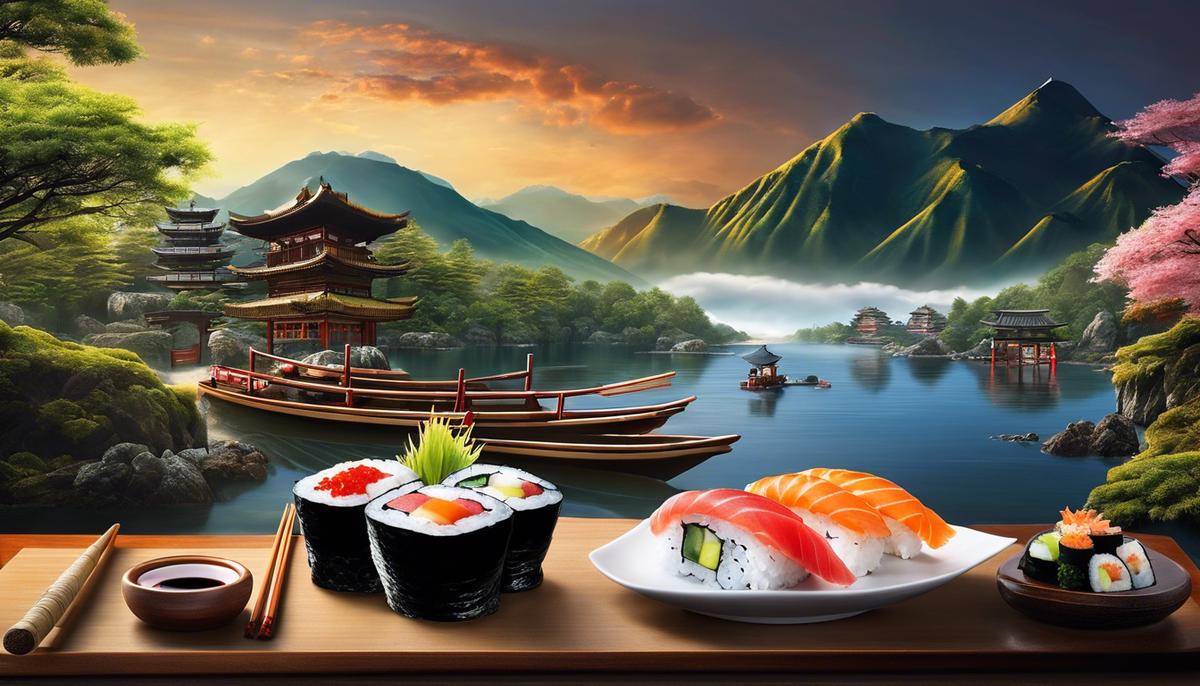
Now that we’ve navigated the myriad facets of sushi – from authentic tradition to modern high-end gastronomy – one thing is certain: sushi has become a universal language that connects cultures and opens up countless possibilities for taste and creativity. It is a culinary dialogue that has been shaped and reinterpreted over the years. The ongoing symbiosis of sushi and the many cultures that have internalized it shows the transformative power of gastronomy. At the same time, it invites us to broaden our culinary horizons and discover the wonders of taste that lie beyond our usual foods. Because in the world of sushi there is always a new taste to discover, a new variation to taste and a new story to tell.
